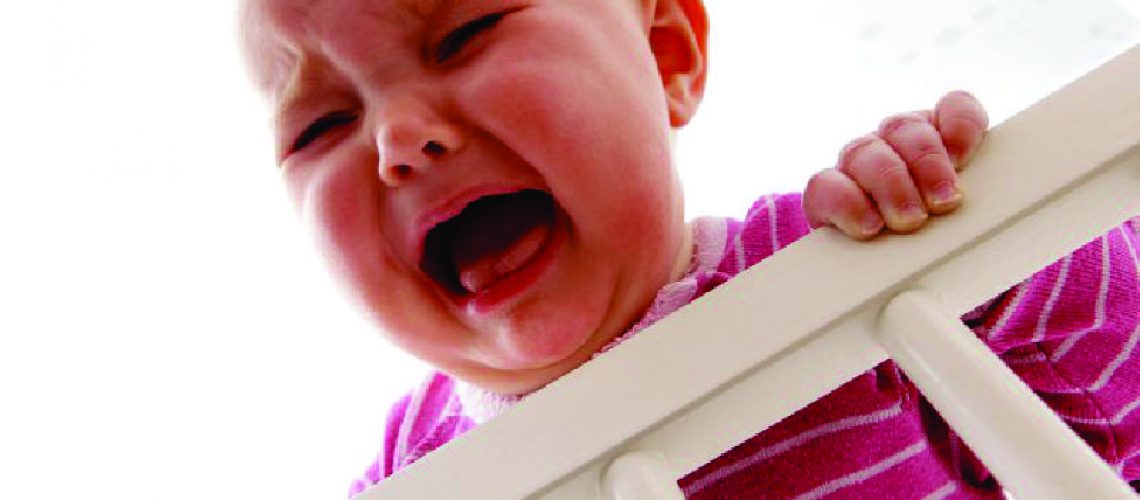By Megan Heuer – Good Night Consultant
Most parent’s cringe when they hear the word: “Cry it out”. But what does it really mean?
In the 20th century, behaviorist John Watson (1928), interested in making psychology a hard science, took up the crusade against affection as president of the American Psychological Association. He applied the mechanistic paradigm of behaviorism to child rearing, warning about the dangers of too much mother love. The 20th century was the time when “men of science” were assumed to know better than mothers, grandmothers and families about how to raise a child. Too much kindness to a baby would result in a whiney, dependent, failed human being. Funny how “the experts” got away with this with no evidence to back it up!
Instead there is evidence all around (then and now) showing the opposite to be true! According to a behaviorist view completely ignorant of human development, the child ‘has to be taught to be independent.’ We can confirm now that forcing “independence” on a baby leads to greater dependence. Instead, giving babies what they need leads to greater independence later.
Richard Ferber, author of Solve Your Child’s Sleep Problems, is the best-known advocate of this. The fact is that caregivers who habitually respond to the needs of the baby before the baby gets distressed, preventing crying, are more likely to have children who are independent than the opposite. Soothing care is best from the outset. Once patterns get established, it’s much harder to change them.
Parents often think this method of “sleep training” involves leaving babies alone to cry for as long it takes before they fall asleep. But cry it out simply refers to any sleep-training approach that says it’s fine to let a baby cry for a specified, usually short, period of time before offering comfort.
Why advocates for crying-it-out say it works:
Proponents of the cry-it-out method know that by six months babies are wise to the fact that crying often results in being picked up, rocked, or fed — pretty good motivation to keep on crying. But once they realize No one is responding every time they cry, most will give up the crying game, usually within three or four nights.
Sometimes it’s just about setting limits that you will not nurse all night or replace a pacifier 10 times per night or rock your baby in the rocking chair for 3 hours and then every 2 hours after that. Those are all sleep associations that sometimes need to be broken (and not replaced with a new one). The act of crying does nothing to teach baby to sleep and it won’t change his personality. Cry “it” out is simply letting baby find his own way to fall asleep and allowing him to cry out his frustration about not being able to get that pacifier replaced for the 10th time. None of us get better at something without practice.
What Cry It Out Isn’t:
• Cry it out is not replacement for feeding when baby can not comfortably sleep all night without food.
• Cry is out is not meant to be used when baby is hungry, wet, very sick, in pain, etc.
• Cry it out does not mean throwing your baby into a room, closing the door and ignoring baby forever and ever.
• Cry it out is not replacement to parenting when baby needs it.
What is the feeling behind it?
Conflicting feelings on the cry-it-out method as many think there are only two methods to sleep training 1. Co-sleeping/baby with you call the time 2. Crying-it-out – but many do not understand the cry-it-out method as it is not leaving you baby to cry until they fall asleep and this is the general understanding on crying-it-out.
One study found that babies who were at least seven months old who were left for short periods to cry it out experienced no marked long-lasting effects. This may help to reassure you that short spells of crying it out won’t harm your baby.
What do people say about it?
A lot of client’s and your average person I have come across thinks sleep training can only be done through crying-it-out, most people have the misconception that sleep training involves putting your child in their cot and letting them cry while you walk out and close the door and they will eventually out of exhaustion fall asleep.
Many researchers have different views:
1. Penelope Leach: author of Your Baby and Child.
• Approach: Compassionate crying it out. If you leave your baby crying, he’ll feel abandoned and fear that your departure at bedtime, and any other time, isn’t safe.
• When: Starting at about nine months. Babies can’t really learn that night-time is for sleeping until then.
• What to do: Since the goal is to help your baby feel that bedtime is safe and happy, and that he can go to sleep on his own, don’t abandon him outright. Instead, keep to your enjoyable bedtime rituals and when your baby cries go into his room as often as you need to, reassure him, and leave. Leach writes: “You may have to repeat this over and over again, but it is the only sure way, eventually, to convince him both that you will come and that you will not get him up.”
2. Benjamin Spock, author of Baby and Child Care.
• Approach: Cry it out.
• When: Three months.
• What to do: Say goodnight and don’t look back. Usually, after three nights of unchecked crying, your baby will start going to sleep by himself. Spock says that most babies will cry for up to 30 minutes on the first night, realise they’re not getting anywhere, and fall asleep. He writes: “I’m convinced that they are only crying from anger at this age…[Checking on her] only enrages her and keeps her crying much longer.”
3. William Sears, author of The Baby Book.
• Approach: Sleeping with your baby or other responsive tactics. He writes: “The result of [crying it out] is usually the same: a strung-out mother and an angry baby, who will eventually exhaust himself to sleep – but at what price? We wish to put the cry-it-out approach to sleep, forever.”
• When: From infancy until the child is ready for his own bed.
• What to do: Consider sharing your bed with your baby for the first few months or more of his life. According to Sears, mother and baby sleep better and longer side-by-side, baby gets warmth, nurturing and a readily available breast if he’s breastfeeding, and babies thrive when they sleep near their parents. Plus, if the mother has returned to work, sleeping with her baby may help restore and build connections that can be frayed during the working day.
Good Night’s Stance on Crying it out:
At Good Night, we don’t believe that one form of “sleep training” will suit all children. We are not for or against crying it out, we are also not for or against sleep training. We are for sleep.
Every parent has the right to her/his own opinion of their children and how to raise them however I think we can agree that sleep should be a priority in any household. For this reason, an approach should be formulated on what the child needs and what the parent are comfortable with.
The good news is that if children are taught how to sleep well from birth then Crying-it-out might not be necessary. The bad news is, that if bad sleeping habits are formed in older children, it is unlikely that a child will be able to learn how to sleep well without some crying as children is a child’s way of protesting change!
#sleeptraining

